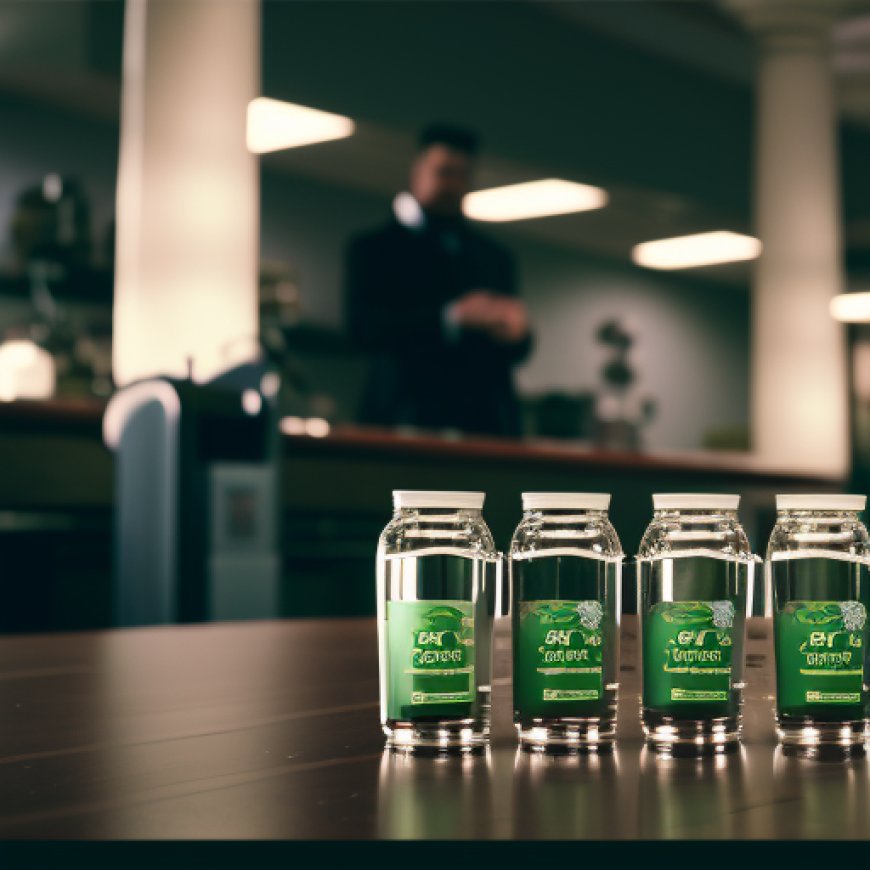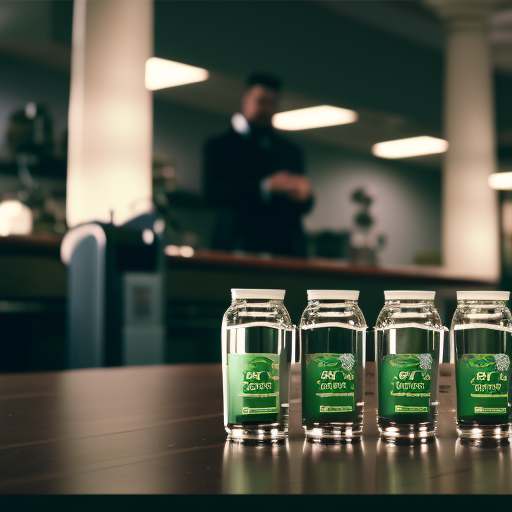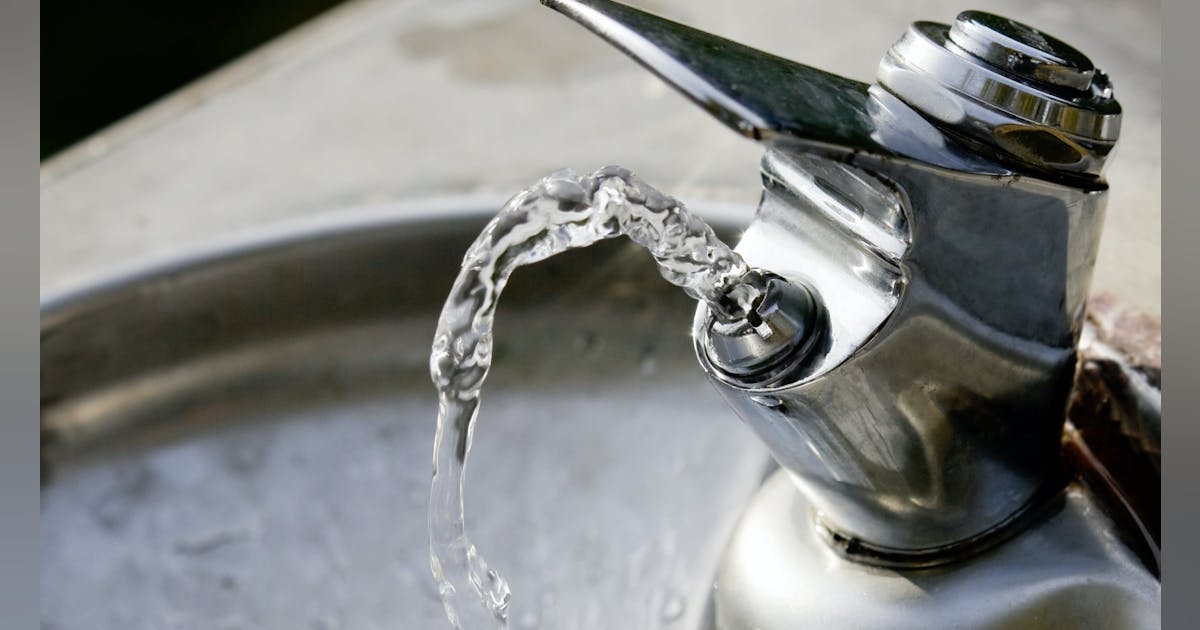Michigan rolls out Filter First program for schools’ drinking water
Michigan rolls out Filter First program for schools' drinking water WaterWorld Magazine


The Michigan Department of Environment, Great Lakes, and Energy (EGLE) Implements New Protections Against Lead in School Drinking Water

The Michigan Department of Environment, Great Lakes, and Energy (EGLE) has announced its plans to implement new protections against lead in school drinking water. This initiative is a result of the Filter First legislation, which was passed by the state legislature and signed by Governor Gretchen Whitmer in October last year.
Filter First Legislation
The bipartisan legislation, known as the Clean Drinking Water Access Act (2023 PA 154) and amendments to the Child Care Organizations Act (1973 PA 116), aims to protect children from exposure to lead in drinking water in schools and child care centers. The legislation directs $50 million in funding and other resources to support the installation of lead-reducing water stations throughout the state.
The Centers for Disease Control and Prevention emphasizes that no safe blood lead level has been identified in children. To promote a child’s healthy development, it is crucial to prevent any exposure to lead.
Governor Whitmer stated, “Every parent wants to make sure their children are safe, and the Filter First bills will protect access to clean drinking water at school. In Michigan, we know how important it is to protect our kids at school. With Filter First, we are taking action so all our kids have access to safe drinking water so they can focus on learning in class. We have also delivered free breakfast and lunch, invested in mental health, and improved school safety. To protect access to safe drinking water across Michigan, we worked together to enforce the strongest lead and copper rule in the country, made record, bipartisan investments to fix our water infrastructure, and helped communities replace thousands of lead service lines.”
Implementation and Requirements
Under the new state legislation, schools and child care centers are required to take several steps to ensure the safety of their drinking water:
- Develop a drinking water management plan (DWMP)
- Install lead-reducing filters on all drinking water fixtures
- Test filtered water annually for schools and every two years for child care centers
The Michigan Department of Environment, Great Lakes, and Energy (EGLE) will provide funding for the acquisition and installation of filtered bottle filling stations, water coolers, point of use faucet filters, as well as certain maintenance and sampling costs. This funding will be available until it is exhausted.
EGLE is collaborating with the Michigan Department of Lifelong Education, Advancement, and Potential (MiLEAP) to provide schools and child care centers with a DWMP template and guidance on filters by April 2024. This will allow schools sufficient time to implement the program before the Filter First legislation goes into effect. The deadline for schools and child care centers to complete their DWMPs is January 24, 2025. By the end of the 2025-2026 school year, all drinking water sources must have approved filters installed.
Additional Information and Resources
EGLE has launched the Filter First web page, which provides more information about the program for school and child care administrators. EGLE and MiLEAP are also planning to host a training webinar on Filter First on April 10, 2024. Furthermore, guidance documents and a DWMP template will be made available for a 30-day public comment period by April 24, 2024.
SDGs, Targets, and Indicators
-
SDG 6: Clean Water and Sanitation
- Target 6.1: By 2030, achieve universal and equitable access to safe and affordable drinking water for all.
- Indicator 6.1.1: Proportion of population using safely managed drinking water services.
- Target 6.3: By 2030, improve water quality by reducing pollution, eliminating dumping and minimizing release of hazardous chemicals and materials, halving the proportion of untreated wastewater, and substantially increasing recycling and safe reuse globally.
- Indicator 6.3.2: Proportion of bodies of water with good ambient water quality.
-
SDG 4: Quality Education
- Target 4.a: Build and upgrade education facilities that are child, disability, and gender sensitive and provide safe, nonviolent, inclusive, and effective learning environments for all.
- Indicator 4.a.1: Proportion of schools with access to (i) electricity; (ii) the Internet for pedagogical purposes; (iii) computers for pedagogical purposes; (iv) adapted infrastructure and materials for students with disabilities; (v) basic drinking water; (vi) single-sex basic sanitation facilities; and (vii) basic handwashing facilities (as per the WASH indicator definitions).
Table: SDGs, Targets, and Indicators
| SDGs | Targets | Indicators |
|---|---|---|
| SDG 6: Clean Water and Sanitation | Target 6.1: By 2030, achieve universal and equitable access to safe and affordable drinking water for all. | Indicator 6.1.1: Proportion of population using safely managed drinking water services. |
| SDG 6: Clean Water and Sanitation | Target 6.3: By 2030, improve water quality by reducing pollution, eliminating dumping and minimizing release of hazardous chemicals and materials, halving the proportion of untreated wastewater, and substantially increasing recycling and safe reuse globally. | Indicator 6.3.2: Proportion of bodies of water with good ambient water quality. |
| SDG 4: Quality Education | Target 4.a: Build and upgrade education facilities that are child, disability, and gender sensitive and provide safe, nonviolent, inclusive, and effective learning environments for all. | Indicator 4.a.1: Proportion of schools with access to (i) electricity; (ii) the Internet for pedagogical purposes; (iii) computers for pedagogical purposes; (iv) adapted infrastructure and materials for students with disabilities; (v) basic drinking water; (vi) single-sex basic sanitation facilities; and (vii) basic handwashing facilities (as per the WASH indicator definitions). |
Analysis
1. Which SDGs are addressed or connected to the issues highlighted in the article?
The issues highlighted in the article are connected to SDG 6: Clean Water and Sanitation and SDG 4: Quality Education.
2. What specific targets under those SDGs can be identified based on the article’s content?
- Under SDG 6, the specific target addressed is Target 6.1: By 2030, achieve universal and equitable access to safe and affordable drinking water for all.
- Under SDG 6, another specific target addressed is Target 6.3: By 2030, improve water quality by reducing pollution, eliminating dumping and minimizing release of hazardous chemicals and materials, halving the proportion of untreated wastewater, and substantially increasing recycling and safe reuse globally.
- Under SDG 4, the specific target addressed is Target 4.a: Build and upgrade education facilities that are child, disability, and gender sensitive and provide safe, nonviolent, inclusive, and effective learning environments for all.
3. Are there any indicators mentioned or implied in the article that can be used to measure progress towards the identified targets?
Yes, there are indicators mentioned in the article that can be used to measure progress towards the identified targets:
- Indicator 6.1.1: Proportion of population using safely managed drinking water services can be used to measure progress towards Target 6.1.
- Indicator 6.3.2: Proportion of bodies of water with good ambient water quality can be used to measure progress towards Target 6.3.
- Indicator 4.a.1: Proportion of schools with access to basic drinking water can be used to measure progress towards Target 4.a.
Behold! This splendid article springs forth from the wellspring of knowledge, shaped by a wondrous proprietary AI technology that delved into a vast ocean of data, illuminating the path towards the Sustainable Development Goals. Remember that all rights are reserved by SDG Investors LLC, empowering us to champion progress together.
Source: waterworld.com

Join us, as fellow seekers of change, on a transformative journey at https://sdgtalks.ai/welcome, where you can become a member and actively contribute to shaping a brighter future.







